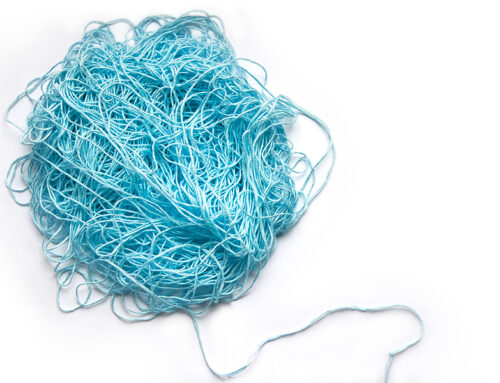No matter what age and stage we’re at, the fall season always seems to arrive with its own unique energy as we settle into new routines.
I like to use this time of year to reset and recharge my own energy and productivity. After all, the first of the year is not our only chance for self-improvement. There are many opportunities for us to pause and reflect throughout a given year.
By adopting an approach of continuous renewal, we keep ourselves focused on all we have yet to achieve rather than dwelling on what we haven’t yet accomplished.
And when it comes to achieving our big goals and focusing on our top priorities, mastering habits is key.
Think of how much easier it is to hike on a clear, well-maintained trail, as opposed to scrambling over fallen trees and rocky slopes. Our habits help us bridge the gap between our intentions and our actions and enable us to do activities automatically. After all, activities we do only occasionally are infinitely more challenging. Any task we haven’t done recently is akin to a change. And as we all know, change is hard.
Here are 5 ways you can use habits to inspire your own new beginning, invest in your wellbeing and productivity, and help you make time in your day for what matters most.
_____
1 – Begin with a clear goal. A clear goal has a specific outcome and a deadline. Sleep more, eat better or be more active are far too big to serve as effective goals. A specific goal states what you want to achieve and when. For example, “I want to run a half-marathon by November 1st.”
Even though you are being specific, you also want to be bold and think aspirational. What would your goal be if you couldn’t fail? What would your goal be if success was inevitable?
And finally, you’ll want to identify why this goal is important to you by completing this thought: “So I can…model healthy living for my children.” “So I can… improve my fitness and feel more energized each day.” You’ll probably have many reasons why your goal is important to you. If so, write them all down. Each of these reasons will serve as inspiration.
2 – Visualize success. You must see yourself succeeding first in your mind before you can achieve it in reality. You must be convinced you can do this before you’re willing to put in the effort to get there.
“You must learn a new way to think before you can master a new way to be.” Marianne Williamson
3 – Take a tiny step. Ironically, the biggest and most important action we can take toward achieving our goal is one, tiny step. Floss just one tooth. Do just one push-up. Run for three minutes.
In many cases, getting started is harder than simply doing the task. We may have to overcome fear, uncertainty, and self-doubt and starting with big steps can overcomplicate these feelings. In the beginning, it’s not about volume, but rather about making our habits automatic.
Big steps also require a lot of our energy. Launching right into an hour of running every day when you haven’t run in years may work for a few days, but your motivation is bound to wane as soon as the weather turns, or you get a muscle cramp. This leads to procrastination, pressing snooze and going back to sleep.
On the other hand, tiny steps are easy. And the easier an activity is, the more likely we are to begin. Once we begin, we’re more likely to continue. And this consistent action is what leads to a habit. Over time, our tiny steps snowball into creating the outcomes we want, without having to rely on depleting resources like willpower or discipline.
4 – Use prompts. Prompts serve as excellent cues. They remind us to take action. An effective prompt uses this formula. “When I (fill in the blank), I will (fill in the blank).” For example, “When I brush my teeth, I will floss one tooth.” “When I get out of bed, I will do one yoga pose.” Of course, you can floss all your teeth, and you can do many stretches, but your prompt will help you take your most important step, your first step.
Some people refer to prompts as habit-stacking or habit-pairing. In other words, you link a well-established habit to your new habit. If you want to drink more water, commit to drinking one glass before your morning coffee. If you want to stretch more, commit to doing two stretches after every trip to the bathroom. The existing habit serves as your cue for the new habit. A prompt helps us consistently repeat our tiny step. Once your habit is consistent, you can slowly build on it.
5 – Celebrate success. You’ll experience an immediate boost in positive emotion when you complete your one, tiny step, and soon you’ll start to associate this strong, positive emotion with the new behavior. This combination of positive emotion and repetition helps us build habits. Your brain becomes wired to repeat the activity again and again, and this helps you form your new habit much faster. Success leads to success.
Celebrating our accomplishments is a crucial part of making lasting change. Celebrate immediately, and in keeping with the theme of tiny steps, your celebration may be as simple as telling yourself, “I did it!” with a pat on the back.
So, what new habit will you commit to? What tiny step can you take today to start forming that habit? Use this change in season to prioritize your wellbeing and your productivity and share your new habit with us in the comments. We find so much inspiration in our Clear Concept community and we’d love to be one of your champions, helping you form your new habit.








Leave A Comment